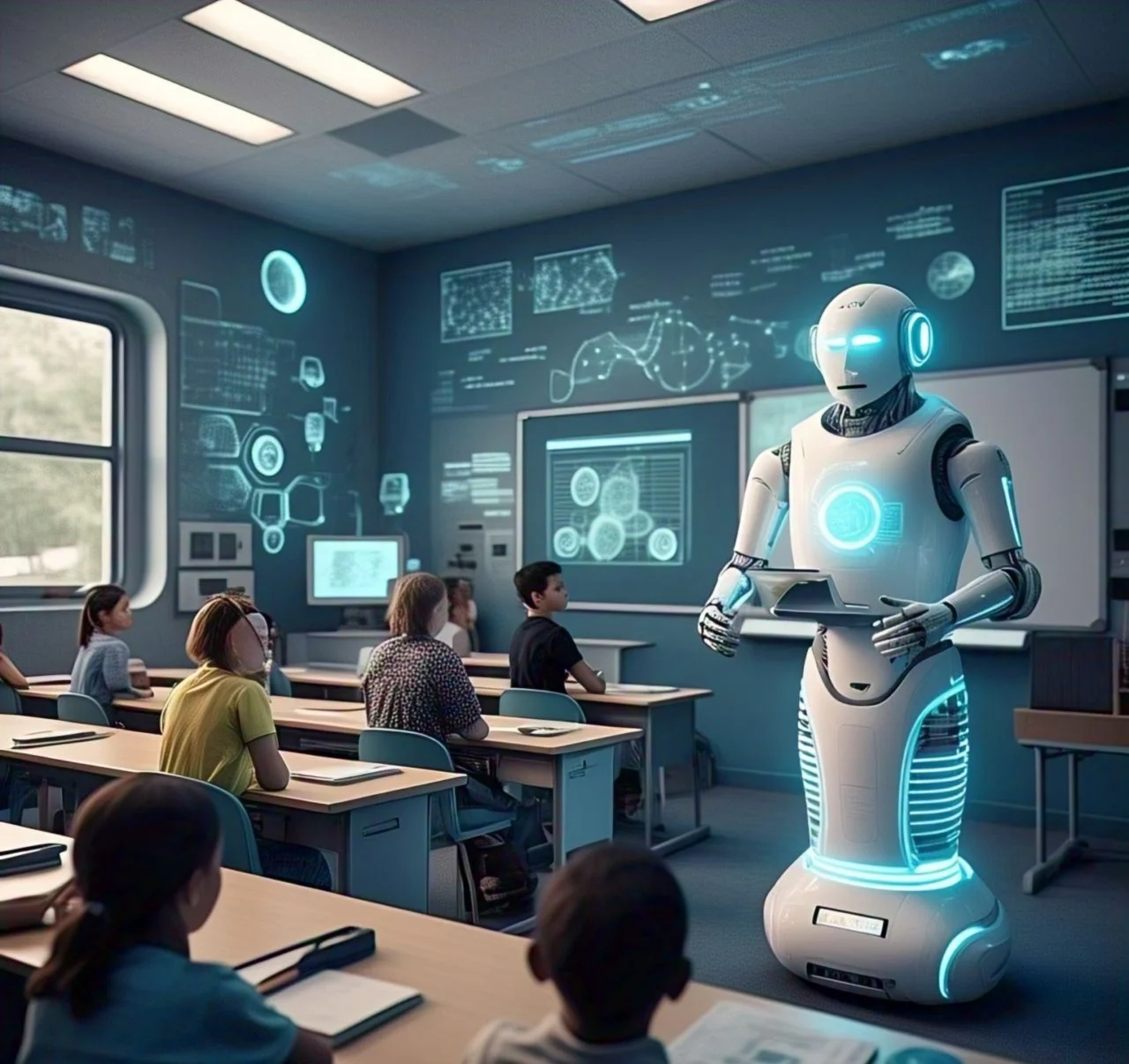As we approach 2025, it’s clear that artificial intelligence (AI) is reshaping the landscape of education in exciting new ways. AI is not just challenging the traditional methods of teaching; it’s adding fresh dimensions to how we learn, particularly through online education platforms. In this article, we’ll explore how AI is making a huge impact on the future of education and enhancing students’ learning experiences.
From personalized learning to real-time assistance, AI is playing a major role in transforming the way students engage with education. Let’s dive into the key ways AI is revolutionizing education in 2025.
1. Personalized Learning: Customizing Education for Every Student

One of the most powerful features of AI in education is its ability to deliver personalized learning. Unlike traditional education where all students are taught at the same pace, AI allows learning to be tailored to each student’s individual needs. Online platforms are using AI to track how a student learns, what areas they struggle with, and how they grasp new concepts.
If a student is having difficulty understanding a specific topic, AI-powered systems can recommend additional resources, practice questions, or videos to help them better understand the material. By 2025, this personalized approach will become even more advanced, creating a learning experience that is as unique as each student.
This method helps improve the learning process because it adapts to the student’s pace, allowing them to progress when they are ready. This contrasts sharply with the one-size-fits-all approach of traditional classrooms.
2. AI-Powered Tutors: 24/7 Support for Students
AI isn’t just about automating tasks—it’s about enhancing student learning experiences. AI-powered tutors are becoming a game-changer, providing real-time support to students, anytime they need it. Imagine being able to get help with a tricky math problem at 10 PM. With AI, virtual tutors are always available to assist, ensuring that students never have to wait for classroom hours to get the help they need.
These AI tutors are designed to break down complex topics and explain them in simple, easy-to-understand terms. This is especially beneficial for students who might not have access to traditional tutoring services. Plus, it’s an affordable option that ensures all students, regardless of their financial situation, have the support they need to succeed.
For more resources on AI in education, you can check out My Educational Guide, where we dive deep into the latest trends and tools.
3. Automated Grading and Instant Feedback
Another exciting development in AI is the introduction of automated grading systems. These systems can grade essays, assignments, and multiple-choice questions instantly, saving educators time and giving students quick feedback. No more waiting for days to get results!
AI can also provide more detailed and personalized feedback than traditional grading systems. For example, if a student makes a mistake, the AI system can point out exactly where they went wrong and suggest ways to improve. This level of detailed feedback helps students learn from their mistakes and progress faster.
By 2025, we’ll see these systems becoming even more accurate, giving educators insights into their students’ strengths and areas for improvement.
4. AI in Student Engagement: Making Learning Fun
Keeping students engaged in the classroom can be a challenge, but AI is stepping in to help. Traditional teaching methods can sometimes struggle to keep students interested, but AI is helping to make learning more engaging and interactive.
Through gamified learning and virtual classrooms, AI is making education more fun and interactive. Imagine learning a new concept through a game that rewards you for completing challenges or watching an immersive video lecture. These tools are designed to make learning enjoyable and motivating, increasing student participation and engagement.
AI also helps create quizzes, simulations, and interactive lessons that make learning more engaging, fun, and effective.
5. AI’s Role in Assessments: More Precise and Efficient
AI is also making waves in student assessments. With traditional methods, teachers often have to grade assignments manually, which can take a lot of time. AI tools, on the other hand, can monitor students’ progress over time, identifying areas where they may need more help.
These tools provide teachers with detailed insights, so they can offer targeted support to students who need it most. By 2025, AI-driven assessments will be more precise, giving both students and teachers valuable data to help improve learning outcomes.
6. AI: The Future of Education
As we look toward 2025, it’s clear that AI in education will continue to evolve and grow. AI is making education more personalized, more efficient, and more engaging for students of all ages. Whether it’s through AI-powered tutors, personalized learning paths, or real-time assessments, AI is paving the way for a future where students can learn in the way that works best for them.
If you want to stay up-to-date with the latest educational tools and trends, visit My Educational Guide, where we cover everything from AI innovations to the future of learning.
Conclusion
The future of education is AI-driven. With its ability to adapt to students’ needs and provide personalized support, AI is making education more accessible and effective. As we move into 2025 and beyond, AI will continue to shape how we learn, making education more tailored and efficient than ever before.
Now is the perfect time to explore how AI can enhance your own learning journey. Whether you’re a student or an educator, embracing these innovations will open up a whole new world of opportunities for success.
